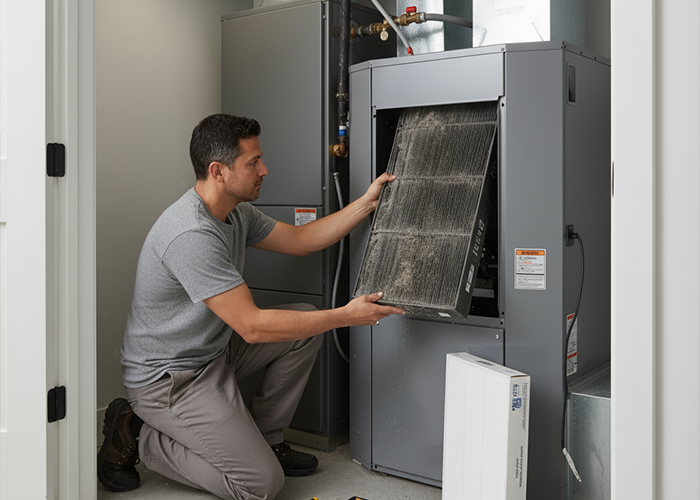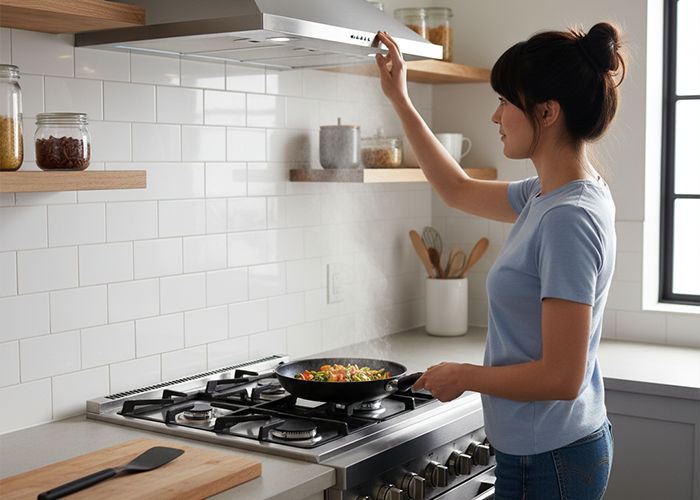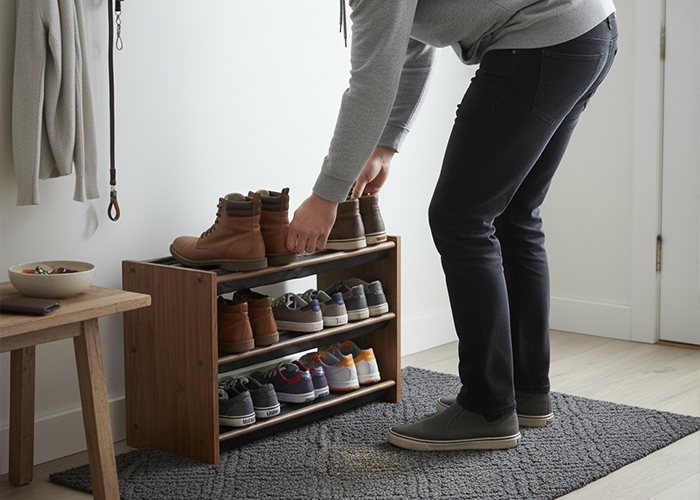Most people clean what they can see, like floors and countertops, and forget about the air that fills every room. Indoor air quality affects how you breathe, sleep, and feel throughout the day, even if you do not notice it right away. With a few steady maintenance habits, you can make the air in your home cleaner and more comfortable for everyone.
Why Indoor Air Quality Matters at Home
Indoor air quality is more than a buzz phrase. It describes the mix of dust, moisture, gases, and tiny particles floating around inside your home. When that mix is not balanced, it can lead to headaches, coughing, itchy eyes, or a heavy, stuffy feeling in certain rooms.
Many families spend most of their time indoors, so even mild problems can grow over time. People with allergies, asthma, or weak lungs often feel changes in air quality first, but everyone can notice more fatigue or irritation when the air is not at its best. Cleaner indoor air quality supports comfort and makes it easier to relax at home.
Good maintenance gives you a way to manage these issues instead of reacting to them. When you treat your air like any other part of the home that needs care, you stay ahead of trouble and help your home feel better day after day.
How Maintenance Supports Cleaner Indoor Air

Most indoor air problems come from three main things: pollution sources inside the home, poor ventilation, and weak filtration. Regular maintenance touches all three at the same time. When you clean equipment, check for leaks, and keep surfaces under control, you remove many of the particles that would otherwise stay in the air.
Indoor air quality is closely tied to how well your systems run. If filters are full, vents are blocked, or fans do not move air properly, dust and other pollutants can spread from room to room. A system that is maintained is more efficient and better at capturing what you do not want to breathe.
Maintenance also gives you a chance to spot small issues early. A minor leak, a bit of hidden mold, or damaged ductwork is much easier to handle when it is caught during a routine check instead of after it has grown into a larger problem.
Start With an Indoor Air Inspection
Before you change anything, it helps to know what is going on in your home. A simple indoor air inspection can start with your own walk-through. Look for water stains, peeling paint, visible mold, heavy dust on vents, or rooms that feel unusually stuffy or musty.
You can also pay attention to how your family feels in different spaces. If someone always has a scratchy throat in one room or wakes up congested in the morning, that can be a sign of a local air issue. Writing these notes down gives you a basic picture of where to focus.
For a deeper indoor air inspection, you can bring in a professional. They may test humidity levels, check for carbon monoxide or radon, and examine your HVAC system and ductwork. Their findings can help you build a clear maintenance plan instead of guessing.
Take Care of HVAC Systems and Filters

Your heating and cooling system has a major influence on indoor air quality because it moves air through the entire house. When filters are old or ducts are dirty, the system can push dust, dander, and other particles everywhere instead of trapping them. Regular service keeps the system doing its job properly.
Most homes should have HVAC filters checked at least once a month. Many filters need to be replaced every one to three months, depending on usage, pets, and local conditions. Higher efficiency filters that your system can handle will catch smaller particles and help improve overall air quality. A maintenance specialist can suggest a filter type that fits both your system and your budget.
It also helps to keep supply and return vents clear. Try not to block them with furniture, curtains, or rugs. When the system is off, you can gently vacuum vent covers to remove dust. For deeper cleaning or duct issues, it is safer to rely on a trained technician rather than opening things up yourself.
Manage Moisture to Protect Room Air Quality
Moisture problems can quietly damage room air quality if they are left alone. High humidity and damp surfaces give mold and mildew a chance to grow on walls, ceilings, and around windows. Once mold is present, it can release tiny spores into the air and cause breathing issues for many people.
Start by watching for early signs of moisture. These may include foggy windows, dark spots on walls or ceilings, peeling paint, or a constant damp smell. Bathrooms, kitchens, basements, and laundry areas tend to need the most attention. Exhaust fans should vent outside and should run during and after showers or cooking.
In some homes, dehumidifiers are helpful, especially in damp basements or during humid seasons. Keeping humidity at a moderate level can slow mold growth and make the air feel lighter. Remember that dehumidifiers and fans also need regular cleaning so they do not become sources of dust or bacteria.
Reduce Everyday Indoor Pollutants

A lot of indoor pollutants come from everyday habits. Scented candles, air fresheners, cleaning sprays, and some polishes release chemicals into the air. Cooking at high heat without a vent hood can send fine grease and smoke into nearby rooms. Over time, these small sources add up.
You do not need to give up a tidy or comfortable home to help your air. You can switch to fragrance-free or low-emission cleaning products and use a range hood while cooking whenever possible. Opening windows for a short time, when the outdoor air is clean, can also give your home a quick refresh.
A few simple changes can help:
- Use a vacuum with a HEPA filter and microfiber cloths so dust is picked up and not just pushed around.
- Avoid smoking indoors and try to limit heavy chemical sprays.
- Store paints, solvents, and similar items in a garage or shed instead of in living spaces.
These steps may seem small, yet they build up to better air quality when you keep them up over time.
Use Ventilation and Purifiers Wisely
Fresh air is one of the easiest tools you have. Opening windows for short periods helps push stale indoor air out and bring fresher air in. Turning on bathroom and kitchen exhaust fans while you cook or shower helps move moisture and pollutants outside instead of letting them spread through the house.
Sometimes outdoor air is not ideal, such as near busy roads or during smoke events. In those cases, you may want to rely more on filtration inside the home. Portable air purifiers with HEPA filters can help clean the air in bedrooms, living rooms, or home offices where people spend the most time.
A maintenance professional can help you decide how many purifiers you need and where to put them. They can also test your exhaust fans and ventilation equipment to make sure they are working properly. When everything is sized and maintained the right way, it quietly supports better indoor air quality in the background.
Daily Habits for Better Indoor Air Quality

Indoor air quality responds well to steady, simple habits. Regular cleaning with the right tools helps remove dust, pet dander, and pollen before they drift into the air again. Washing bedding weekly, wiping hard surfaces, and vacuuming soft surfaces can reduce the amount of material floating around.
Shoes can carry dirt, pollen, and other outdoor pollutants inside. A basic mat and a spot for shoes near the door help keep those particles from spreading across your floors. For pet owners, routine grooming and washing of pet bedding make a noticeable difference in how clean the air feels.
Clutter also plays a role. When surfaces are crowded, dust has more places to settle and is harder to remove. Keeping items organized and off the floor makes cleaning faster and more effective, which supports healthier air in the long run.
Keeping Your Home’s Air Healthy Over Time
Improving indoor air quality is not a one-time project. It is a mix of maintenance, ventilation, product choices, and daily routines that work together over months and years. When you partner with a trusted maintenance specialist, you can create a plan that matches your home, your systems, and your family’s needs.
With good care, your home’s air supports your comfort instead of working against it. Cleaner air can help you breathe easier, rest better, and feel more at ease in the space where you spend so much of your time.
Related Articles:

